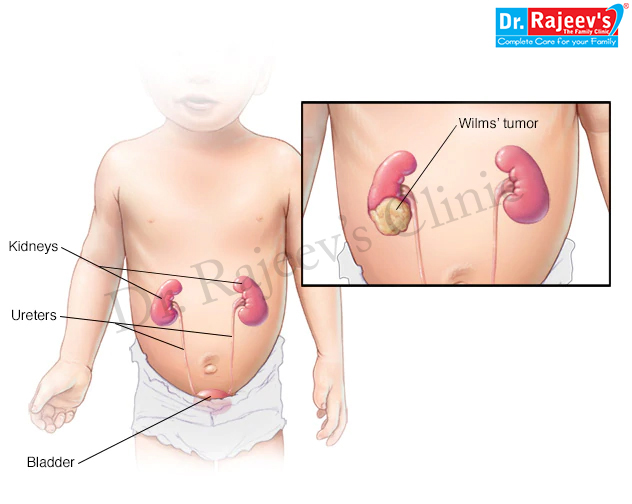

Wilms tumor is a rare kidney cancer that primarily affects children. Also known as nephroblastoma, it's the most common cancer of the kidneys in children. Wilms tumor most often affects children ages 3 to 4 and becomes much less common after age 5.
Wilms tumor most often occurs in just one kidney, though it can sometimes be found in both kidneys at the same time.
Over the years, advancements in the diagnosis and treatment of Wilms tumor have greatly improved the outlook (prognosis) for children with this disease. With appropriate treatment, the outlook for most children with Wilms tumor is very good.

Signs and symptoms of Wilms tumor vary widely, and some children don't show any obvious signs. But most children with Wilms' tumor experience one or more of these signs and symptoms:
Other signs and symptoms may include:
It's not clear what causes Wilms tumor, but in rare cases, heredity may play a role.
Cancer begins when cells develop errors in their DNA. The errors allow the cells to grow and divide uncontrollably and to go on living when other cells would die. The accumulating cells form a tumor. In Wilms' tumor, this process occurs in the kidney cells.
In rare cases, the errors in DNA that lead to Wilms' tumor are passed from a parent to the child. In most cases, there is no known connection between parents and children that may lead to cancer.
Factors that may increase the risk of Wilms tumor include:
Wilms tumor occurs more frequently in children with certain abnormalities or syndromes present at birth, including:
Wilms tumor can occur as part of rare syndromes, including:
Homoeopathic Medicine:
RL-10